
COURTESY OF SAM DROEGE, US DS
Extreme close-up of a worker bee’s head. Note the bee’s tongue is extended.

COURTESY OF SAM DROEGE, US DS
Extreme close-up of a worker bee’s head. Note the bee’s tongue is extended.
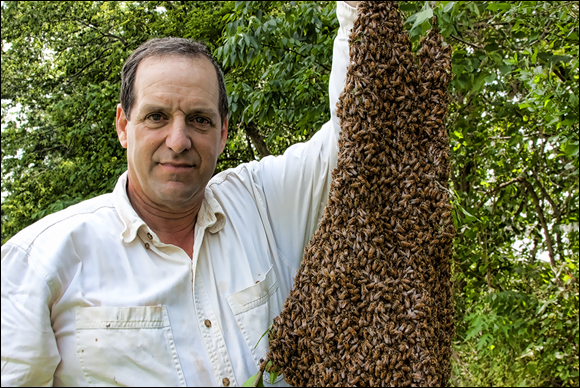
COURTESY OF DANIEL CARON, WWW.NATURENOMAD.COM
Beekeeper David Wright holds a branch containing a nice swarm that’s ready to put into a new hive. Honey bees are remarkably gentle during swarming and can be handled with relative ease.
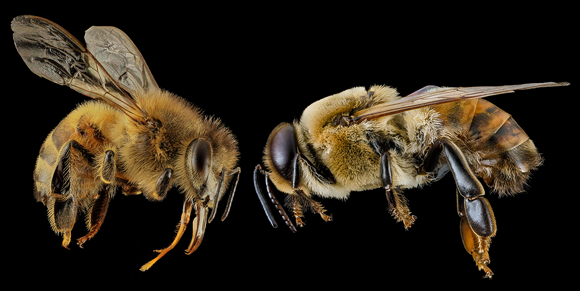
COURTESY OF SAM DROEGE, US DS
This uber-close image shows in detail the anatomy of a worker (left) and a drone (right). Note the drone’s huge eyes and larger body.
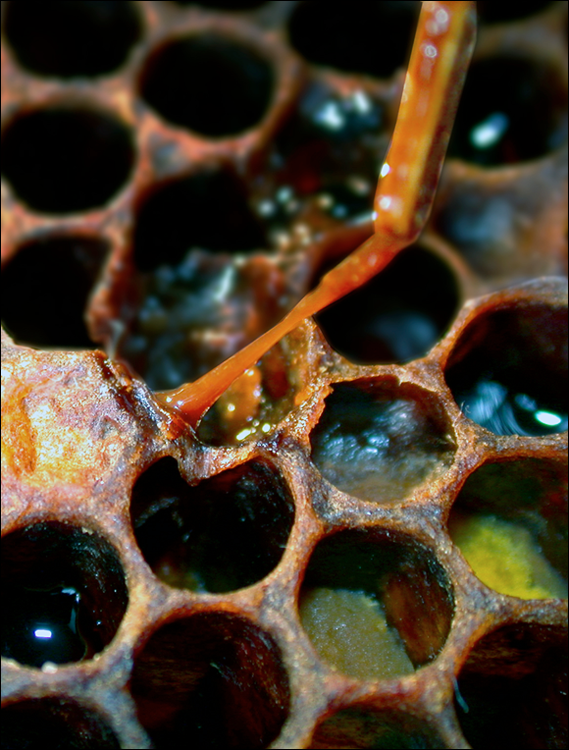
COURTESY OF VIRGINIA WILLIAMS, US DA-ARS
Confirm American foulbrood by inserting a toothpick or wooden match into a capped cell. If you note a ropy, gooey mass as you slowly withdraw the stick, you have good reason to believe your colony has AFB.
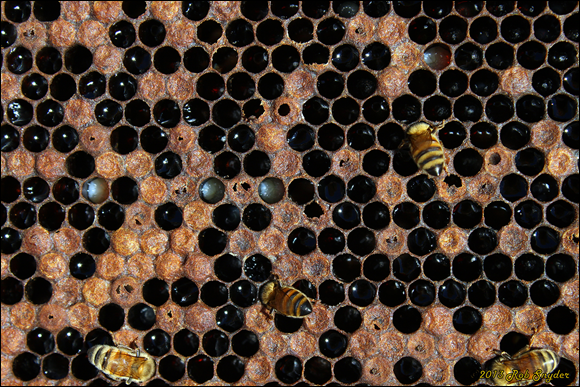
COURTESY OF ROB SNYDER AT BEE INFORMED PARTNERSHIP
The spotty brood pattern and the sunken, perforated cappings are reasons to suspect American foulbrood.
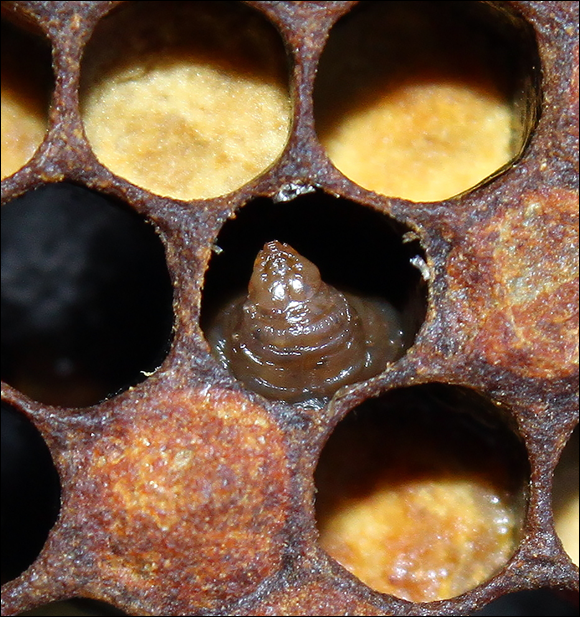
COURTESY OF ROB SNYDER AT BEE INFORMED PARTNERSHIP
This brown, shriveled larvae at the bottom of its cell is the result of European foulbrood.
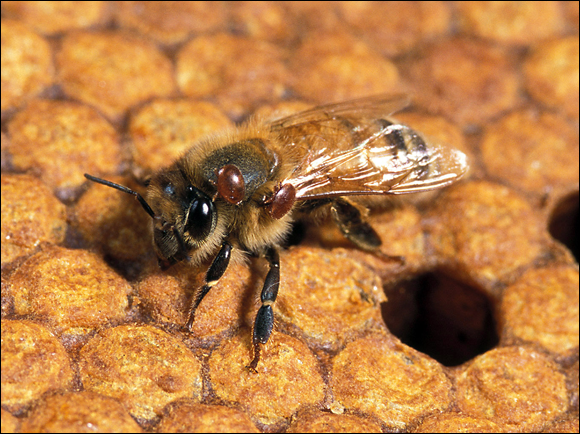
COURTESY OF STEPHEN AUSMUS, US DA-ARS
Varroa mites are visible to the naked eye. Note the Varroa on this worker bee.
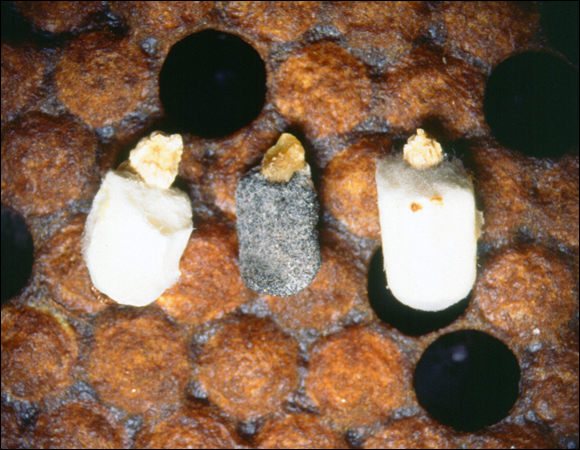
COURTESY OF JEFF PETTIS, US DA-ARS
These hard, chalky, mummified pupae indicate chalkbrood disease in this hive.
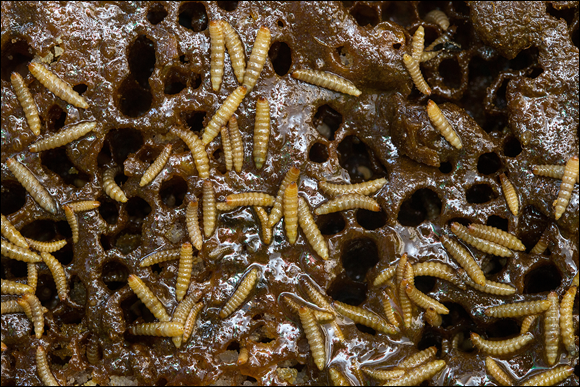
COURTESY OF ALEX WILD
When the larvae of the small hive beetle hatch, they tunnel through combs, feeding on pollen, honey, and brood and defecating, causing fermentation and leading to what’s called “a slime out,” as you can see from this slimy image.
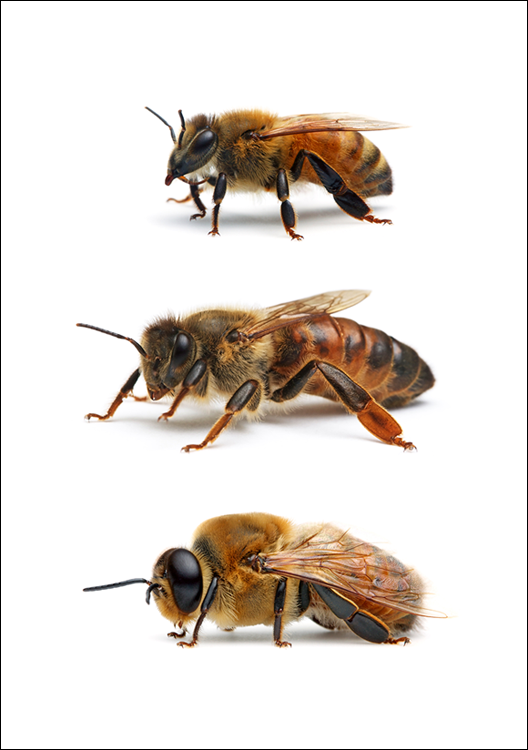
COURTESY OF ALEX WILD
This remarkable close-up photo illustrates the visual differences between a worker (top), queen (middle), and drone (bottom).
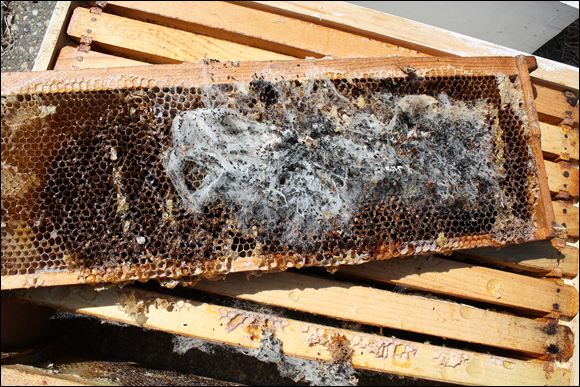
COURTESY OF MIRANDA SHERMAN
Wax moths can destroy honeycomb in a weak hive, leaving a hopeless, webby mess for the beekeeper. This frame is a goner.
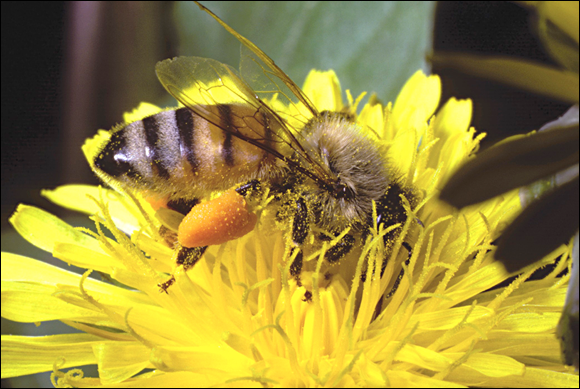
COURTESY OF EDWARD ROSS
Honey bees gather pollen and store it in pollen baskets located on their hind legs. Pollen is used by bees as a protein food.

COURTESY OF HOWLAND BLACKISTON
Honey’s not the only food you can get from your bees. Try your hand at brewing mead (honey wine). Delicious!
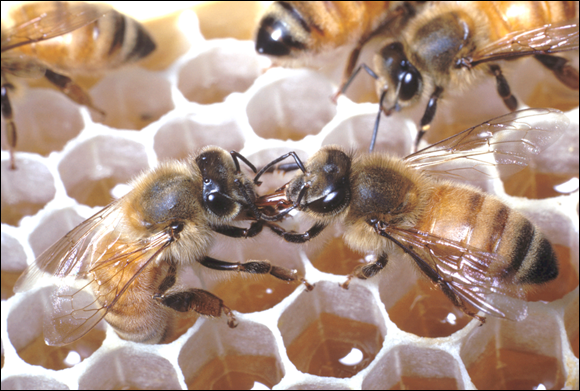
COURTESY OF EDWARD ROSS
These two workers share nectar. This form of socialization helps bees communicate the type of food sources available for foraging.
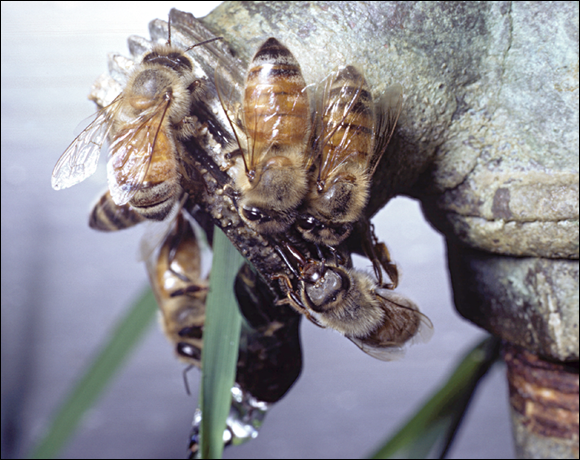
COURTESY OF EDWARD ROSS
Foraging worker bees gather water from a leaky water spigot. The bees use water to cool the hive and dilute honey.
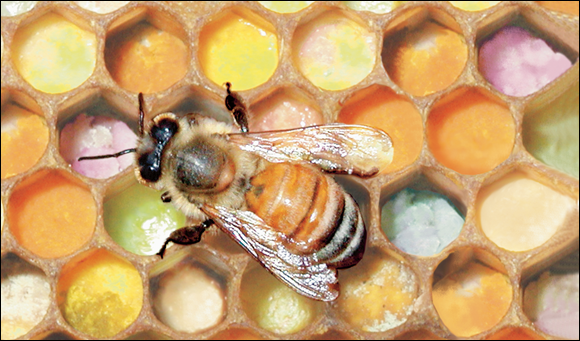
COURTESY OF JOHN CLAYTON
That’s pollen in these cells. The color of the pollen depends upon the flowers from which it originates. In time, you will be able to identify the plants your bees are visiting by the color of the pollen they deposit in the cells.
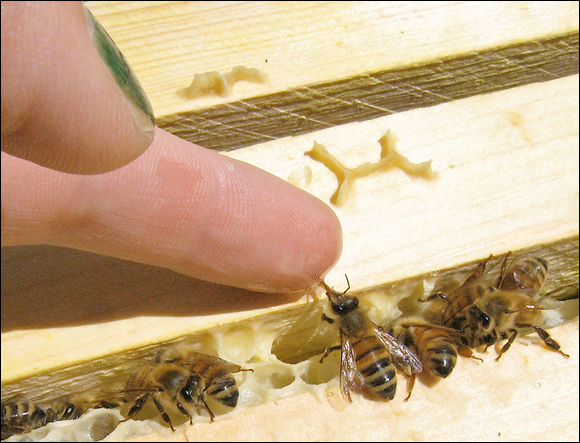
COURTESY OF SHARON STITELER
You will soon discover that honey bees are gentle creatures. This beekeeper is hand feeding a drop of sugar syrup to one of his girls.
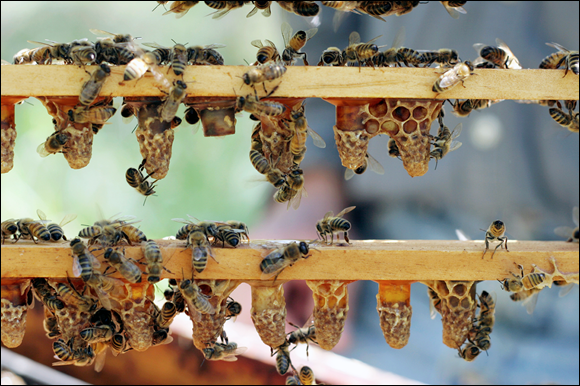
PHOTO BY LYNDA RICHARDSON, CORBIS
After grafting larvae into the queen cups, the bees build queen cells; you’ll soon have a whole lot of queens underway. Be sure to add a protector around each cell before the queens start emerging.
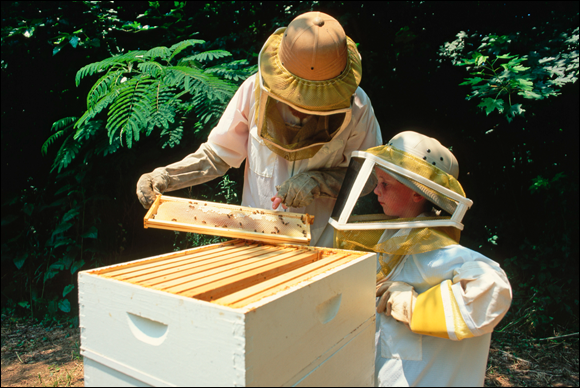
PHOTO BY DAVE STOBBE, CORBIS
Beekeeping is a great hobby for the entire family. By all means, get the little ones involved. All that energy will come in handy come bottling season.
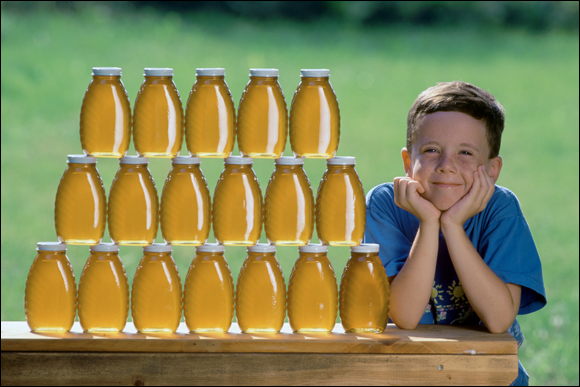
PHOTO BY DAVE STOBBE, CORBIS
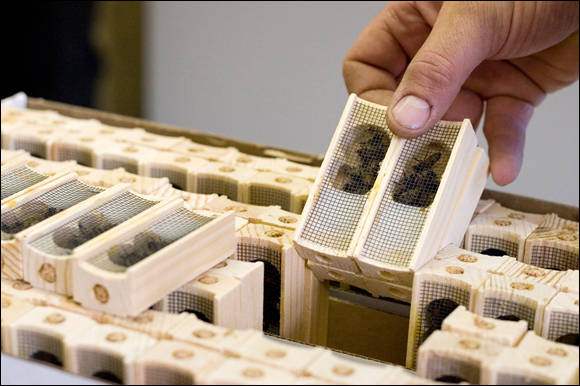
PHOTO BY LYNDA RICHARDSON, CORBIS
You can turn queen rearing into a nice little business. Local beekeepers will be eager to find a local source for strong, healthy, productive queens. These queens are caged and ready for sale.
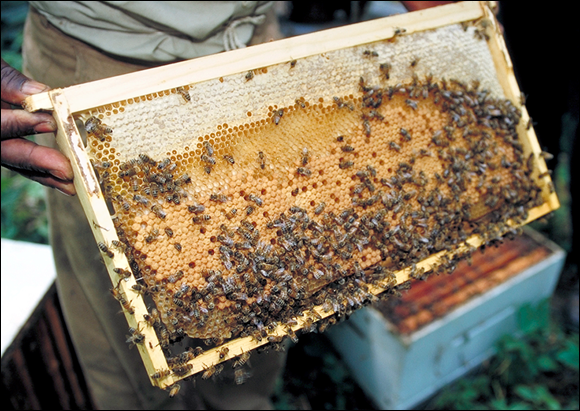
COURTESY OF US DA-ARS
A beautiful frame of capped brood. Note the tight brood pattern with capped honey in the upper third of the frame.
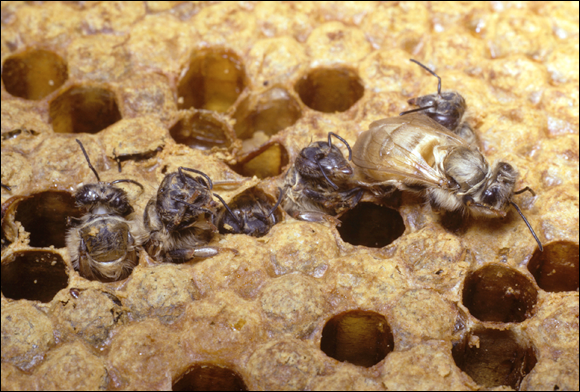
COURTESY OF EDWARD ROSS
These young worker bees are just emerging from their cells. Note the soft, downy fur on these youngsters.
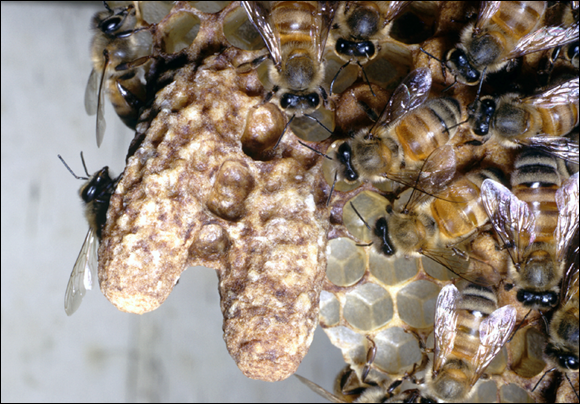
COURTESY OF EDWARD ROSS
These two peanut-shaped cells contain developing queens.
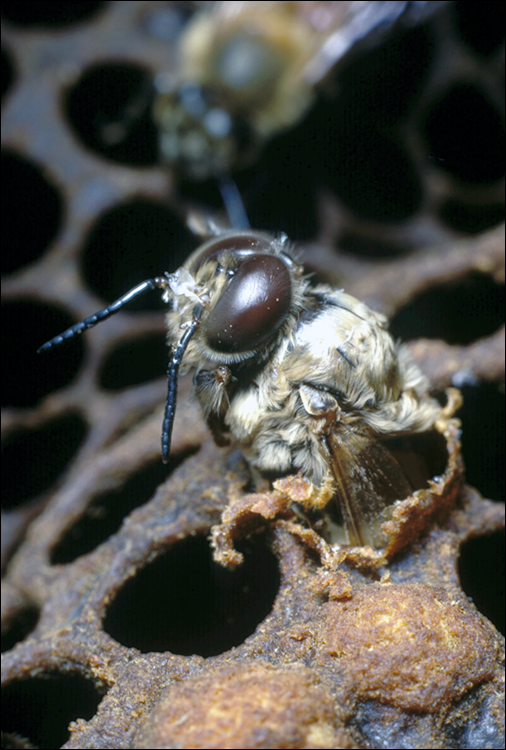
COURTESY OF EDWARD ROSS
You can really see the huge wrap-around eyes on this young drone that is emerging from his cell.